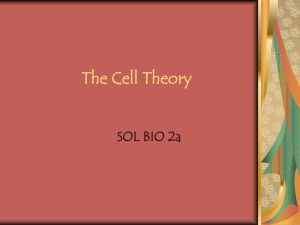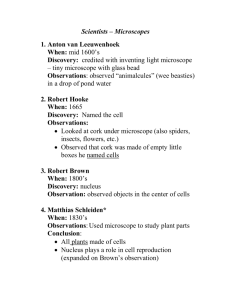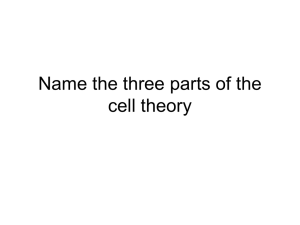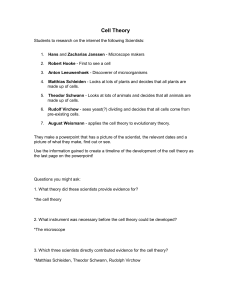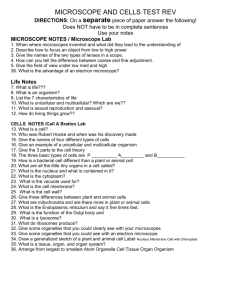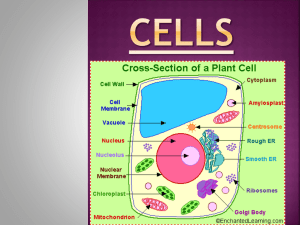File
advertisement
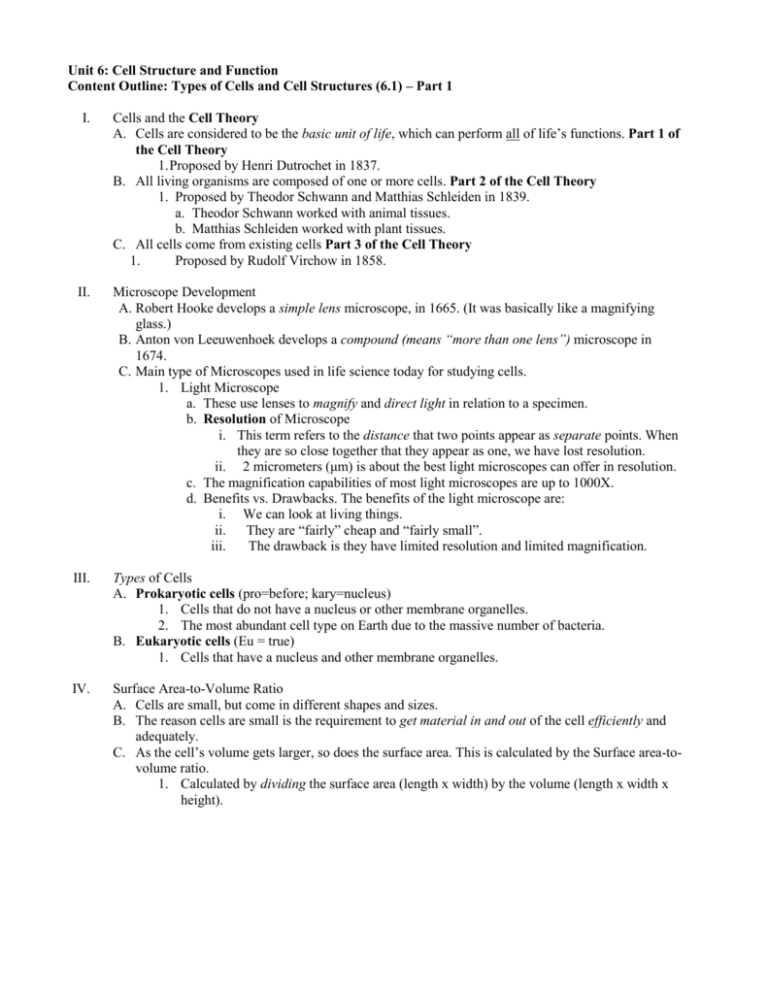
Unit 6: Cell Structure and Function Content Outline: Types of Cells and Cell Structures (6.1) – Part 1 I. Cells and the Cell Theory A. Cells are considered to be the basic unit of life, which can perform all of life’s functions. Part 1 of the Cell Theory 1. Proposed by Henri Dutrochet in 1837. B. All living organisms are composed of one or more cells. Part 2 of the Cell Theory 1. Proposed by Theodor Schwann and Matthias Schleiden in 1839. a. Theodor Schwann worked with animal tissues. b. Matthias Schleiden worked with plant tissues. C. All cells come from existing cells Part 3 of the Cell Theory 1. Proposed by Rudolf Virchow in 1858. II. Microscope Development A. Robert Hooke develops a simple lens microscope, in 1665. (It was basically like a magnifying glass.) B. Anton von Leeuwenhoek develops a compound (means “more than one lens”) microscope in 1674. C. Main type of Microscopes used in life science today for studying cells. 1. Light Microscope a. These use lenses to magnify and direct light in relation to a specimen. b. Resolution of Microscope i. This term refers to the distance that two points appear as separate points. When they are so close together that they appear as one, we have lost resolution. ii. 2 micrometers (μm) is about the best light microscopes can offer in resolution. c. The magnification capabilities of most light microscopes are up to 1000X. d. Benefits vs. Drawbacks. The benefits of the light microscope are: i. We can look at living things. ii. They are “fairly” cheap and “fairly small”. iii. The drawback is they have limited resolution and limited magnification. III. Types of Cells A. Prokaryotic cells (pro=before; kary=nucleus) 1. Cells that do not have a nucleus or other membrane organelles. 2. The most abundant cell type on Earth due to the massive number of bacteria. B. Eukaryotic cells (Eu = true) 1. Cells that have a nucleus and other membrane organelles. IV. Surface Area-to-Volume Ratio A. Cells are small, but come in different shapes and sizes. B. The reason cells are small is the requirement to get material in and out of the cell efficiently and adequately. C. As the cell’s volume gets larger, so does the surface area. This is calculated by the Surface area-tovolume ratio. 1. Calculated by dividing the surface area (length x width) by the volume (length x width x height).
